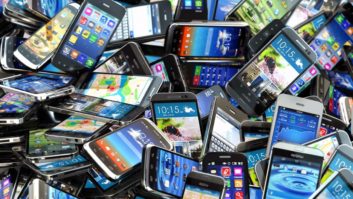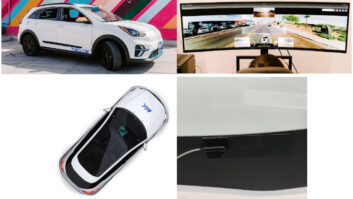By Chris Ahern, Chief Executive Officer at ZAGG Brands

As we enter the new decade, this is the perfect opportunity to reflect on the past year and take a moment to process the latest mobile technology developments.
2019 was a year of new technology trends promising to alter the business landscape as we know it. Not all of these trends have yet developed their full potential, however they sparked a discussion and will continue to evolve in the future.
At ZAGG Brands, we have identified four major trends that, in our opinion, will take off and drive the market in 2020 as mobile devices continue to evolve.
1. Power, power, power
Whether we are talking about smart cities, 5G, Wi-Fi 6, video streaming, e-sports or cashless payments – all trends depend heavily on mobile devices having the battery power to ensure they work efficiently.
For wireless charging, we expect faster charging with speeds well over 10W, even up to 20W. Faster power means devices can be recharged quicker. In terms of charging pads, we can also expect wireless connections over a broader range of space around the center point of charging pads. This “positional freedom” means users will have the ability to drop the device anywhere on a charging pad. Potentially, we will also see pads big enough to charge multiple devices with positional freedom. This development will revolutionize the user experience.
Furthermore, wireless charging will be integrated into more devices than just mobile phones – tablets, laptops, and even electric vehicles eventually. As part of the natural product lifecycle, wireless charging will become more of a reality as people look to replace devices that require wired charging today.
Wired charging is another area where we can soon expect higher speeds and more capable charging technologies like power delivery (PD). In recent years, USB charging speeds were limited to 5W, whereas now, device makers sell 18W chargers. This trend of advanced power delivery will continue in 2020 with research and development in several areas, including Gallium Nitride (GaN), USB-PD, Quick Charge 4.0/5.0, advances in wireless power delivery, and alternative battery and power storage technologies.
2. 5G
Proclaimed as the biggest trend in 2020, we anticipate gradual 5G growth in contrast to the massive growth some have predicted. We expect 5G to be introduced in high population areas first, where demand is high, as well as key urban centers. Acquiring the spectrum and building out the requisite technology networks will be a costly and lengthy process for carriers. This means the speed of growth will be gradual, and we believe it is most likely to mirror what we saw during the transition from landlines to wireless. As 5G becomes more ubiquitous with time, people will move away from traditional routers and Wi-Fi access points and rely solely on 5G connectivity for internet connection.
As 5G will offer faster streaming and video delivery services for media such as Netflix, the reliance on and attachment to mobile devices will only increase accordingly. Device protection and power solutions will, as such, become a necessity, and we expect to see stronger demand for these products in 2020.
3. Second-hand market
As mobile devices get more innovative and technologically advanced, it is inevitable that the associated price for new devices grows as well. Today’s smartphone user is opting for more affordability as evidenced by slowing handset sales during 2H 2019. Although this shift in consumer appetites has led mobile phone manufacturers to strengthen their entry-level and mid-tier portfolios, we can expect the second-hand market to strengthen next year as people seek more affordability in refurbished devices. Persistence Marketing Research’s recent report estimates the global refurbished and used mobile phone market will expand by 8.9 percent CAGR by 2025, reaching $39 billion, up from $20 billion in 2017.
Another motivation for customers to buy second-hand is the desire to create less waste and incorporate sustainability into their everyday life.
4. Sustainability
Sustainability is a key global trend impacting businesses and people in their everyday life. The growing public awareness about issues such as plastic pollution has created a lasting momentum, which is driving companies to rethink how they are doing business and how they can make the transition to a sustainable society and economy. In 2020, we expect this trend to grow with an increasing number of customers making environmentally conscious purchasing decisions. This will have a transformational impact on every aspect of business, from a company’s supply chain operations, to its employee practices and the physical workspace itself.
Chris Ahern brings more than 21 years of international experience in sales leadership, sales operations, and supply chain management to his role as CEO of ZAGG Brands. In this role since March 2018, Mr. Ahern is responsible for executing on the company’s corporate objectives of Creative Product Solutions, reinforcing the company’s status as a Preferred Global Brand, expanding its Global Distribution footprint, and strengthening the company’s dedication to Operational Excellence. He takes an active role in developing key strategic relationships and continues to foster an environment of innovation in all aspects of the business.
See also: Potential Effects Of The T-Mobile And Sprint Merger On The Wireless Industry













